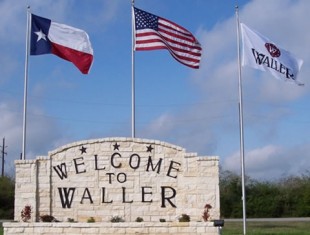The History Of Waller Texas
Prehistory shows that the Tonkawa and Karankawa Indian tribes inhabited the land around Waller. Spanish explorers passed through the Waller area in the 1500s, but settlement was not accomplished for several hundred years. After Texas gained its independence from Mexico in 1836, Austin County was formed to include the land on both sides of the Brazos River. The county courthouse located in Bellville, was too far away from many residents, and almost impossible to reach when the Brazos River reached flood stage. Therefore, on May 1, 1873, the Texas Legislature acted to create Waller County, which included the eastern half of Austin County, part of Montgomery County, and a section of Harris County.
The following selected excerpts are made available to us with compliments and gratitude to Stephanie D. Burman and The City of Waller. (Burman, S. & Schulz, W. (1997). The History of Waller, Texas. If you would like to order copies of the book, please send all inquiries to City Hall.
On January 11, 1884, when K. H. Faulkner filed a plat and dedication establishing the town of Waller, rancher Nape Farr's five hundred head of cattle and two small houses for his hired hands were all that occupied the land. The town was named for Edwin Waller, the first judge of Waller County and one of the first signers of the Texas Declaration of Independence.
Two brothers who lived on a farm on the Harris County line near Waller wasted no time in establishing the basics in the newly planted town. While 38-year-old P. A. "Uncle Doc" Saunders began to make the necessary arrangements for the forty-five mile, several day, covered wagon trip into Houston to bring back the stock needed to open the first store in Waller, his brother, J. T. Saunders, began the process of acquiring a post office.
Though Saunders' Grocery remained the only store in town, only a couple of years passed before the population in and around Waller had grown enough to justify a school. 1897, the size of Waller had increased dramatically. More and more people had begun to find a way to make a living in the small prairie town surrounded by fields of cotton, corn, and cattle. The population was almost 200, and a part-dirt, part-sand Main Street was lined with a dozen or more business establishments.
By 1920, however, more and more automobiles purchased from the Robertson brothers began to appear among the horses and buggies on Main Street. In 1914, the brothers had converted their livery into an automotive garage (the first in Waller), then in 1919, they had purchased the Ford Motor Company of Waller from a Mr. Llewellyn. But in spite of the novelty of the automobile, the ease with which they got stuck on area roads made using them a very weather related activity, and wagons and horses remained the transportation of choice for many Waller residents.
Over the next twenty-five years, the population of Waller continued to grow. By the late 1940's, the town had almost 700 residents and approximately sixty businesses, with over 300 students enrolled in the Waller Independent School District.
Electricity had arrived in 1928, and the J.C. Jenkins' home on the NW corner of Penick and Cherry Street, had been the first to get the service. A devastating fire that same year had destroyed an entire block of Waller's business district, and in 1930-31, a new state highway cut a thirty-foot swath through the town north of and parallel to the railroad tracks. In 1939, the new thoroughfare had been designated a federal highway - U. S. 290.
The election that created the city of Waller was held on October 11, 1947. Five days later, on October 16, an area encompassing approximately 600 acres, which included the township of Waller and populated areas that had sprung up adjacent to it, was decreed by Waller County Judge John Winfree to be the new City of Waller, Texas.
Waller's first city election was scheduled for November 22, 1947. Voting would take place in the Waller School building for a mayor, five aldermen, and a city marshal whose terms would last until the regular state election day on the first Saturday of April 1948.
First City Officials - Waller, Texas
J. E. "Jim" Haney - Mayor
J. C. "Zeke" Hoffman - City Marshal
O. D. Brown - Alderman
Henry Holz - Alderman
J. A. Robertson - Alderman
R. C. Smith - Alderman
C. F. Sorsby - Alderman
As soon as the elections were over, the work of setting up a city began. Over the next few months, the energies of Waller's city officials were directed toward the building of a city jail, setting up a city dump, and getting a city water system built. In the meantime, an ordinance that stated "all fowls must be kept on the owner's property and not allowed to run at large," and another that prohibited hogs within the city limits had been added to the books.
1950 - 1960
By 1950, the city of Waller was growing at a steady pace. There were 715 people and over 60 businesses in the city, and more than 500 students were attending the Waller and Prairie View schools. In 1951, H.C. Richards brought The Waller Herald to town, and for the first time in many years, the city had its own home-based newspaper.
By the end of 1952, construction that had widened Hwy 290 to 24 feet through the city was completed, as was the new Waller Elementary School on Farr Street. In 1957, the Melanee Smith Memorial Library was established, and a unit of the Department of Public Safety was assigned to Waller.
In 1960, there were 48 businesses and nearly 1000 residents in the city of Waller. The railroad serving the city had become the Southern Pacific, and though passenger trains no longer stopped in Waller, many tons of local produce were being shipped out each year.
In January 1963, Forest Daily was appointed Waller's first city judge, and in April, T.C. "Carol" Baskin, Jr. served as mayor pro-temp following the death of Henry Holz. In regular elections held in May of that year, H.D. Carter was chosen the new mayor of Waller.
In 1965, the "free choice" system of desegregation was instituted in Waller schools, God's Mercy Store was closed, and the Waller Baptist Church burned to the ground.
1970 - 1980
Through the efforts of the city and the Waller Volunteer Fire Department, the Waller Volunteer Ambulance Service was established in 1970. In 1975, the city council passed one ordinance that dispensed with the position of city marshal and another that created the Waller Police Department. Jimmie Reynolds was named Waller's first chief of police. Later that year, the old Waller train depot was sold and moved to Bryan, Texas, to be converted into a restaurant. In December 1977, the city took over the financial responsibility of the Melanee Smith Memorial Library.
1980 - 1990
During the next decade, the population of Waller continued to grow, jumping from 1077 in 1980 to 1500 in 1990, with more than 80 businesses recorded in the city in 1980. By 1984, the results of a gradual population expansion from Houston began to be noticed in Waller. The new shopping center was completed on FM 2920, and the number of students enrolled in the Waller Independent School District that year reached almost 3000.
1990-2000
Growth has been the operative word in the city of Waller throughout most of the 1990's. The anticipated, and then actual, construction of the new Highway 290 by-pass from Houston spurred a blossoming population expansion in the eastern part of Waller County that affected both the Waller Independent School District and the city of Waller.
An expansion of the city's sewage treatment plant became a necessity in the early part of the decade, and once again, residents of Waller got their own home-based newspaper, The Waller Times


